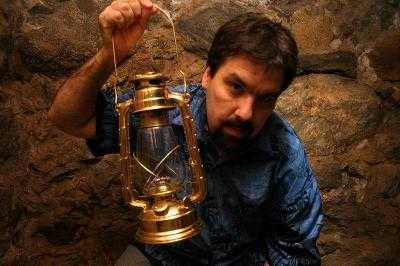Where the Magnet Hits the Metal
Computer History on the Ground
At the dawn of the era of home computing, an unusual type of game was the most popular to play. With just a screen of text and a prompt, you would be asked the simple question: What do you want to do next? As you typed in commands and sentences, the games would tell you a story a story fraught with danger, excitement, puzzles and hours of exploration. They were called text adventures, adventure games, and interactive fiction. They dominated the sales charts and introduced millions to the power and flexibility of home computers. No other type of computer game could come close. And then they were gone forever. Or maybe they never actually left. Director Jason Scott interviewed dozens of creators, players, and scholars about the experience and effect of text adventures and interactive fiction. The result is Get Lamp, a documentary with multiple paths that takes you from a cave deep in Kentucky to the arrival of what some think is a brand new form of literature. What do you want to do next? (Trailer for GET LAMP).
Speakers

Jason Scott is a computer historian and documentary filmmaker who has been collecting, archiving and presenting computer history for over 20 years. Most of his collections can be seen online at the site textfiles.com, which began as a small archive of 1980s computer bulletin board history and has expanded to over fifty years of documents and artifacts. Besides presenting at computer conferences and other events, Jason has also shot two documentaries, BBS The Documentary and Get Lamp, the second of which covers the text adventure game genre, a precursor to the modern games industry. An outspoken critic of poor data archiving and destruction of digital history, Jason co-founded Archive Team, an activist group of rogue archivists dedicated to saving digital history and gaining attention to the importance of the artifacts online communities. Improbably, he also works for the most popular cat on Twitter, @sockington, who has nearly a million and a half followers.

